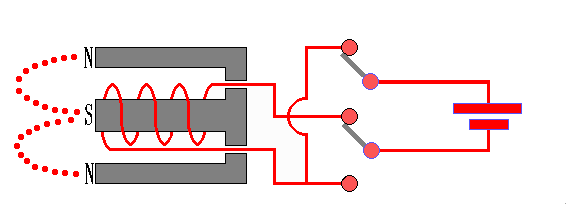

Basic Operating Principles
The Magnum Magnetic Flowmeter determines the flow of conductive liquids
in pipes. It does so by determining liquid velocity using the the principle
of magnetic induction. A conductor (water, for example) moving through
a magnetic field generated by the Magnum flowmeter (see illustation) will
generate a current that is proportional to the velocity of the conductor.
The higher the generated current, the higher the velocity signal.

The Magnum's digital electronics combines the velocity information with existing information about the pipe size, and processes it based on user preferences in regards to filtering and range information into a reliable information about flow. It is important to keep in mind that Magnum is first and foremost a device to measure velocity. It's ability to provide accurate information about flow depends on a number of important outside factors that need always be taken into account:
- area of flow as determined by inside diameter of a given pipe needs
to be provided precisely.
- the pipe needs to be completely filled.
- flow in a given application should be fully developed turbulent flow
with a symetrical flow profile.
- the range (scale) chosen should be based on actual current flow and
not future capacity.
- if the electrodes are not fully submerged in conductive liquid measurement
is not possible.
Some allowance can be made for less then ideal application circumstances owing to the ability of the Magnum operating system to compensate if set up accordingly and properly, and thanks to the fortunate fact that magmeters by nature are linear in their measurement even if in error. If the above conditions are met, the Magnum will provide the most accurate and reliable measurement of any flowmeter technology.